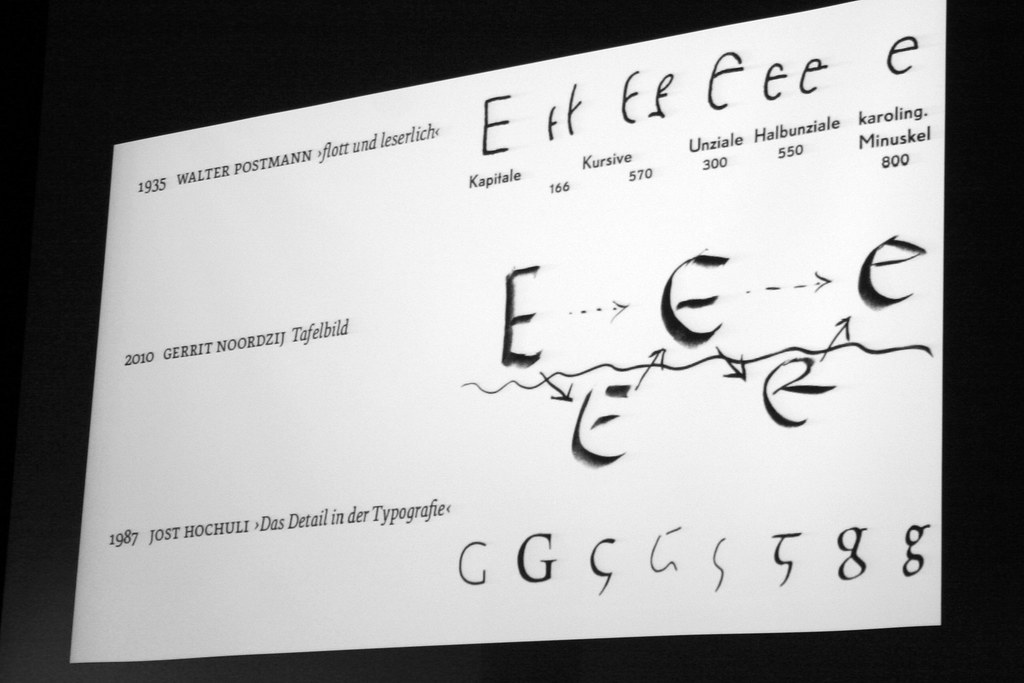1.5 stories g'
Comments
-
How did they get from G' to g'? (From Ց' to g' is quite obvious). (The one story formation g')
0 -
I guess making the body small and making the vertical descend.
BTW the highly charming "g" in Urby is worth a mention here:Craig Eliason said:
https://www.typemates.com/fonts/urby
2 -
 1
1 -
Ofir Shavit said:How did they get from G' to g'?
Here’s a collection of letter evolutions compiled by Martin Tiefenthaler for his talk at Tÿpo St. Gallen 2011, including one for G→g from Jost Hochuli’s Das Detail in der Typografie.
1 -
Seems clear now, thanks.0
-
Basically, in the Latin alphabet, having both uppercase and lowercase was a recent invention - it came about in the Carolingian script, which combined Roman capitals with uncial writing for the lower case. So the lowercase letters had developed independently of the uppercase letters over a long period of time.
1 -
I thought that the bicameral invention was a product of the Renaissance--that it was the humanist scribes of that later period who put together the Carolingian minuscule and the Roman capitals.0
-
Here's a slide from Gerard Unger's 2015 Granshan talk on Carolingian minuscules. It appears at 4:24.

Notice the 1.5 stories g...0 -
@Simon Cozens Dunno, the twist at the top of the tail makes me see this as an open-bottom binocular.1
Categories
- All Categories
- 46 Introductions
- 3.9K Typeface Design
- 487 Type Design Critiques
- 563 Type Design Software
- 1.1K Type Design Technique & Theory
- 655 Type Business
- 860 Font Technology
- 29 Punchcutting
- 520 Typography
- 119 Type Education
- 324 Type History
- 77 Type Resources
- 112 Lettering and Calligraphy
- 33 Lettering Critiques
- 79 Lettering Technique & Theory
- 558 Announcements
- 94 Events
- 114 Job Postings
- 170 Type Releases
- 179 Miscellaneous News
- 276 About TypeDrawers
- 54 TypeDrawers Announcements
- 120 Suggestions and Bug Reports




